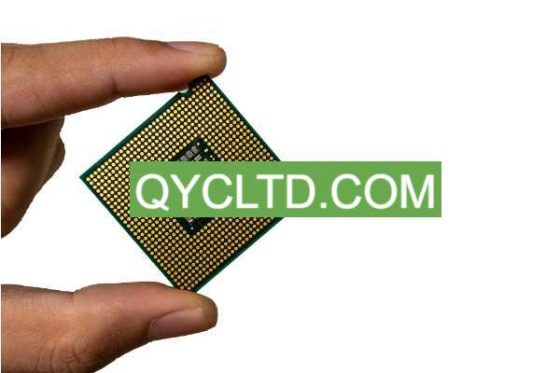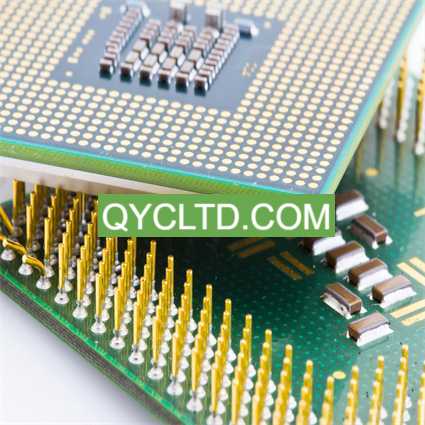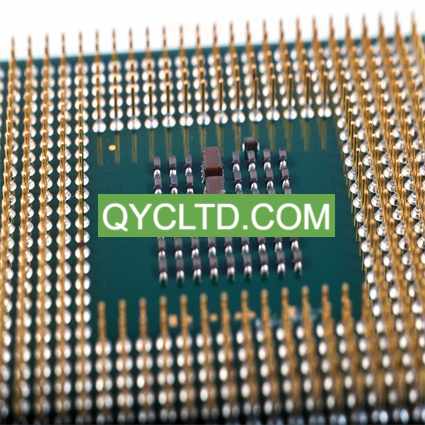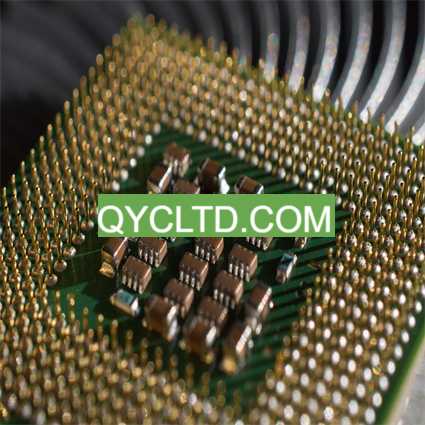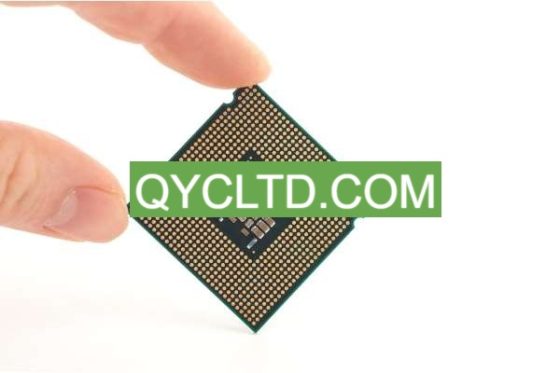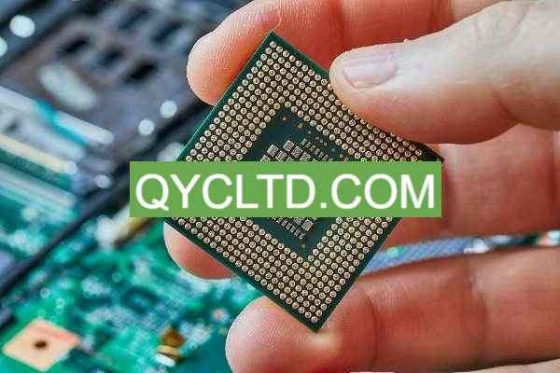What is LCC Package Substrate?
LCC Package Substrate Manufacturer.LCC Package Substrate Manufacturer is a leading provider specializing in the production of high-quality leadless chip carrier (LCC) substrates. These substrates are crucial for the efficient functioning of modern electronic devices, offering enhanced thermal management and electrical performance. The manufacturer utilizes advanced materials and cutting-edge fabrication techniques to ensure reliability and precision in their products, catering to the demands of the semiconductor industry and contributing to the advancement of miniaturized, high-performance electronics.
LCC (Leadless Chip Carrier) packaging substrate is a commonly used integrated circuit (IC) packaging technology. It’s usually made from a rigid substrate covered with a metal layer that connects to the chip’s pins. Compared with the traditional DIP (dual in-line package), the LCC package is more compact and easier to install on the PCB. A distinctive feature of the LCC package is that its pins are lead-free, which complies with environmental standards and helps reduce negative impact on the environment. さらに, LCC packaging also has good thermal and electrical properties and is suitable for a variety of application scenarios, such as communications, 自動車用電子機器, industrial control, 等. 原則として, LCC packaging substrate is an advanced and environmentally friendly IC packaging technology with broad application prospects.
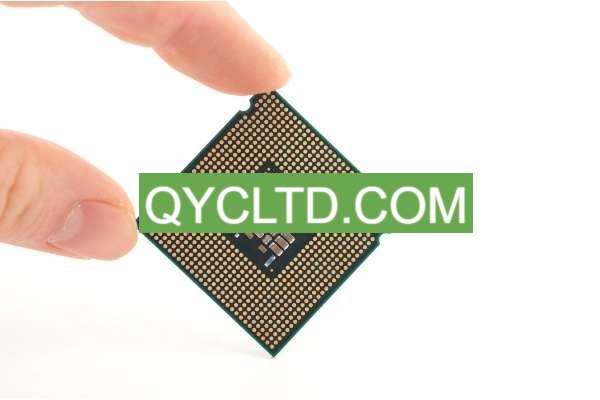
LCCパッケージ基板メーカー
LCC Package Substrate design Reference Guide.
LCC Package Substrate Design Reference Guide
LCC packaging substrate is a substrate type commonly used for integrated circuit packaging, and its design and manufacturing are of great significance in the electronics industry. This guide is intended to provide a reference for the design of LCC packaging substrates and covers the following main contents:
What is the LCC packaging substrate?
LCC packaging substrate is a substrate used for integrated circuit packaging, usually made of ceramic materials, to support and connect circuit components inside the chip.
What materials are used for LCC packaging substrates?
LCC packaging substrates usually use ceramic materials, such as aluminum oxide (Alumina) or boron nitride (Boron Nitride), to provide good thermal conductivity and electrical insulation.
What are the dimensions of the LCC package substrate?
The size of the LCC packaging substrate can vary depending on the specific application needs, and is typically found in square or rectangular forms with dimensions ranging from a few millimeters to tens of millimeters.
What is the manufacturing process of LCC packaging substrate?
The manufacturing process of LCC packaging substrates involves multiple steps, including raw material preparation, mold forming, printed circuits, sintering, metallization and testing.
What are the application fields of LCC packaging substrates?
LCC packaging substrates are widely used in the packaging of high-performance integrated circuits, especially in situations where good thermal conductivity and electrical performance are required, such as communication equipment, 自動車用電子機器, and industrial control.
What are the advantages of LCC packaging substrates?
LCC packaging substrate has good thermal conductivity, excellent dimensional stability and good electrical insulation properties, and can meet the needs of high-performance integrated circuit packaging.
Frequently Asked Questions (FAQ)
This guide also includes answers to some frequently asked questions about LCC packaging substrate design and application to help readers better understand and apply this technology.
Through this guide, you can learn the basic knowledge about LCC packaging substrate design, as well as its applications and advantages in the electronics industry, helping you better apply this technology for integrated circuit packaging design.
What material is used in LCC Package Substrate?
LCC (Leadless Chip Carrier) packaging substrates are usually made of a variety of materials to meet their requirements in electronic devices. These materials must have excellent thermal conductivity, electrical insulation, and mechanical strength to ensure device performance and reliability. The following are some materials commonly used in LCC packaging substrates:
Organic substrate materials: Common organic substrate materials include FR-4 (glass fiber reinforced epoxy resin), FR-5 and BT (benzoquinonetriamine resin). These materials have good mechanical strength and electrical insulation properties, and are easily processed into desired shapes and sizes.
Metallization layer: LCC substrates usually have metallization layers that are used to connect chips and other devices. These metal layers are usually composed of copper, nickel plating and solder to provide good electrical conductivity and soldering properties.
Filling materials: In some high-end LCC packages, filling materials are used to fill cavities or gaps to improve the mechanical strength and thermal conductivity of the substrate. These filling materials are usually materials with good thermal conductivity, such as silicone or epoxy.
Pad material: The bottom of the LCC package usually has a pad for connection to the PCB (Printed Circuit Board). These pads are typically made from nickel, gold or tin alloys to provide good soldering performance and corrosion resistance.
Fillers: Some high-performance LCC packages may use fillers to fill the cavity to increase the strength and stability of the package. These fillers are usually non-conductive to avoid interfering with the circuitry inside the package.
原則として, the material selection for LCC packaging substrate depends on the required performance and application scenarios. Different material combinations can achieve different performance characteristics to meet the needs of various applications.
What size are LCC Package Substrate?
The size of ceramic packaging substrates varies depending on their purpose and application and is often determined by the size and requirements of the specific chip or device. Generally speaking, ceramic packaging substrates can be square, rectangular or other shapes, and their dimensions can range from a few millimeters to tens of millimeters.
In the electronics industry, ceramic packaging substrates are usually used for packaging and connection of integrated circuits, sensors, microprocessors and other devices. Their size is often affected by the required circuit density, thermal management requirements, and space constraints of the specific application.
例えば, in some microelectronic devices, the ceramic packaging substrate may be only a few millimeters in size to accommodate miniaturization design needs. In some high-performance computer chips or other large electronic devices, the size of the ceramic packaging substrate may be larger to accommodate more circuits and connections.
原則として, the size of ceramic packaging substrates is determined based on specific design and application requirements and can vary greatly from case to case.
The Manufacturing Process of LCC Package Substrate.
LCC (Leadless Chip Carrier) packaging substrate is a type of substrate commonly used for integrated circuit packaging. Its manufacturing process includes multiple steps such as raw material preparation, mold molding, printed circuits, sintering, metallization and testing.
まずは, the process of manufacturing LCC packaging substrates begins with the preparation of raw materials. This includes selecting the appropriate substrate material, usually fiberglass reinforced resin (FR-4) or other specific materials, and metallization materials such as copper foil. These raw materials must meet the requirements for strength, electrical conductivity and heat resistance required by the packaging substrate.
Next is the mold forming stage. このステップの内容, the shape and size of the substrate will be manufactured by molding according to the design requirements. This may involve using processes such as machining or chemical etching to ensure precision and consistency of the substrate.
Then comes the process of printing the circuit. この段階では, the surface of the substrate will be covered with conductive material through printing technology to form a circuit pattern. This is usually achieved by printing conductive ink or metallized film on the surface of the substrate and going through process steps such as photolithography and etching.
This is followed by the sintering stage. Once the circuit pattern is printed, the substrate is sent into a high-temperature baking oven for sintering. This step is designed to firmly bond the printed conductive material to the substrate surface, ensuring good electrical connection and stability.
Next comes the metallization process. この段階では, the substrate’s metallization layer will be added to the printed circuit pattern to provide better conductivity and connectivity. This usually involves plating the circuit pattern with a layer of metal such as nickel, copper or gold to ensure good conductivity and reliability of the circuit.
Finally comes the testing phase. After completing all manufacturing steps, the LCC package substrate will be sent to the test equipment for functional and performance testing. These tests are designed to verify that the electrical connections to the substrate are functioning properly and that they meet design specifications and performance requirements.
原則として, the manufacturing process of LCC packaging substrates involves multiple key steps, including raw material preparation, mold forming, printed circuits, sintering, metallization, and testing. Each step is critical to the quality and performance of the final product. All have important impacts.
The Application area of LCC Package Substrate.
LCC (Leadless Chip Carrier) packaging substrate is an integrated circuit packaging material with good thermal conductivity, dimensional stability and electrical insulation properties. It plays an important role in high-performance integrated circuit packaging and meets the stringent requirements for performance, reliability and stability of modern electronic products. The following are the specific applications of LCC packaging substrates in different application fields:
In computers and servers, packaging requirements for high-performance processors and chips are very strict. The LCC packaging substrate can provide good thermal conductivity, effectively dissipate heat, and ensure the stability and reliability of the chip under high-load operating conditions. 同時に, its dimensional stability ensures the stability of the package under different temperature conditions, helping to improve the performance and life of the device.
In communication equipment, LCC packaging substrates are widely used in the packaging of key components such as radio frequency (RF) modules and baseband processors. Its good electrical insulation properties ensure the transmission quality of RF signals, while its excellent thermal conductivity helps reduce the operating temperature of the RF module and improve the performance and stability of the equipment.
In the field of automotive electronics, LCC packaging substrates are used to package key components such as vehicle control units (ECUs), sensors and drivers. Its dimensional stability and electrical insulation properties can adapt to the complex working environment and vibration conditions of automobiles, ensuring the reliability and durability of electronic equipment.
In industrial control and automation systems, LCC packaging substrates are widely used in the packaging of PLC (programmable logic controller), sensors, actuators and other equipment. Its good thermal conductivity and dimensional stability can ensure the stability and reliability of equipment in harsh working environments, improving industrial production efficiency and automation levels.
In consumer electronics products, such as smartphones, 錠剤, cameras, 等。, LCC packaging substrates are widely used in the packaging of key components such as high-performance processors and image sensors. Its dimensional stability and excellent electrical insulation properties help improve the performance and stability of equipment and meet consumers’ high requirements for product performance and experience.
原則として, LCC packaging substrates have broad application prospects in the field of high-performance integrated circuit packaging due to their excellent thermal conductivity, dimensional stability and electrical insulation properties, and can meet the performance, reliability and stability requirements of electronic products in different fields. needs.
What are the advantages of LCC Package Substrate?
LCC (Leadless Chip Carrier) packaging substrate is a packaging solution with good thermal conductivity, dimensional stability and electrical insulation properties. It is widely used in the packaging field of high-performance integrated circuits. Its advantages are mainly reflected in the following aspects:
Good thermal conductivity: The LCC packaging substrate is made of high-quality thermal conductive materials, which can effectively conduct the heat generated by the chip and keep the chip within a safe operating temperature range. This helps improve the performance and stability of integrated circuits and reduces the risk of performance degradation or damage due to overheating.
Excellent dimensional stability: LCC packaging substrate has high dimensional stability and can maintain a stable packaging structure under different temperature and humidity conditions. This stability helps ensure the reliability of the connection between the chip and the external environment, reducing package failure or poor contact problems caused by temperature changes.
Good electrical insulation performance: The LCC packaging substrate is made of insulating materials, which can effectively block current transmission and provide good electrical insulation protection. This helps reduce the risk of crosstalk and electrical failures in the circuit, ensuring circuit stability and reliability.
Suitable for the packaging needs of high-performance integrated circuits: Because the LCC packaging substrate has good thermal conductivity, dimensional stability and electrical insulation properties, it is very suitable for the packaging needs of high-performance integrated circuits. Whether in high-speed communications, computer processors or other fields, LCC packaging substrates can meet high requirements for packaging quality and performance stability.
まとめ, LCC packaging substrates have become an ideal choice to meet the packaging needs of high-performance integrated circuits due to their good thermal conductivity, excellent dimensional stability and good electrical insulation properties. It plays an important role in improving the performance, stability and reliability of integrated circuits, and provides reliable packaging solutions for the development and application of electronic products.
FAQ
What is an LCC package substrate?
An LCC (Leadless Chip Carrier) package substrate is a type of electronic packaging used to mount and interconnect integrated circuits onto printed circuit boards (プリント基板) or other substrates. It typically features a leadless design, meaning it lacks external leads protruding from the package body.
What are the advantages of using LCC package substrates?
LCC package substrates offer several advantages, including reduced footprint on PCBs, improved electrical performance due to shorter interconnection paths, enhanced thermal management, and compatibility with automated assembly processes.
How does an LCC package substrate differ from other packaging types?
Unlike traditional packages with external leads (such as dual in-line packages or quad flat packages), LCC package substrates have their leads positioned underneath the package body, allowing for a smaller footprint and better thermal dissipation.
What are the key considerations when designing with LCC package substrates?
Designers need to consider factors such as signal integrity, thermal management, substrate materials, routing density, and manufacturing processes to ensure optimal performance and reliability when using LCC package substrates.
What types of applications are suitable for LCC package substrates?
LCC package substrates are commonly used in applications requiring high-density mounting of integrated circuits, such as mobile devices, networking equipment, 自動車用電子機器, and industrial control systems.
 半導体パッケージ基板メーカー
半導体パッケージ基板メーカー

